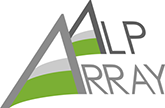Seismic anisotropy of the lithosphere and the upper mantle research group
Seismic anisotropy becomes one of the prime seismology topics of the future. The complex target – structure and development of the Alpine lithosphere and of the upper mantle - calls for being addressed with the use of variety of standard methods as well as with recently established or newly searched approaches. The AA Seismic Anisotropy Working Group will focus mainly on
- evaluation and modelling anisotropy of the lithosphere and the upper mantle for understanding structure and development of the broader area of the Alps. This includes studies of
- the large-scale fossil and/or deformation related anisotropy of the mantle lithosphere
- anisotropy due to flow in the sub-lithospheric mantle
- anisotropy of the crust and particularly improving methods and database for mapping and interpreting at a quality level and in scale as for mantle materials. This includes improved crustal anisotropy imaging by surface waves and body waves combined.
Among above topics, of particular interest are as follows:
- High-resolution models of mantle lithosphere fabrics from body waves in relation to ancient and recent processes that formed the Alps and their broader surroundings,
- Anisotropic tomography images of the heterogeneous upper mantle, origin and imaging mantle discontinuities (e.g., LAB, MLD),
- Constraints from texture in xenoliths and exposed mantle sections,
- The role of water in development of anisotropy, etc.
Particularly, applications of methods exploiting joint data sets (analyses/inversions) are of special interest.
The main task of the AlpArray Seismic Anisotropy group, whose research is based on the AlpArray data, is to coordinate activities among the members, either in collaborative or competitive way and to protect PhD students.
Jarka Plomerova, Helena Munzarova, with a help of Edi Kissling, volunteer to lead communication and coordination among scientists and students interested to join the group.
